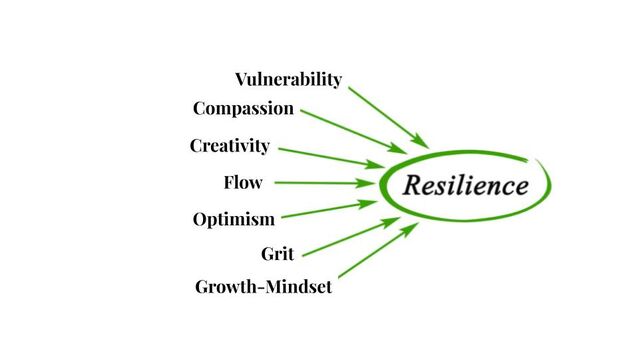Resilience
7 Keys to Sustainable Resilience
The unlearning that can reconnect us with our naturally resilient selves.
Posted January 20, 2021 Reviewed by Ekua Hagan
Resilience is defined as our capacity to adapt to and recover from adversity. Many life experiences can teach us ways to disconnect from our natural capacity to adapt and grow, preventing us from being as resilient as we really are.
The elements below can help us identify patterns we want to unlearn, or unsubscribe from, as well as ways we may wish to engage to increase our personal resilience. Recognizing these elements can allow us to shift into authentic ways of embracing the fullness of our life experience while minimizing the negative impact that challenging events have on us.
These seven key elements of resilience along with their counter-elements below are drawn from Part 3 of the course Sustainable Resilience, a class series I co-teach with Kevin Gallagher. The Sustainable Resilience series promotes emotional health and maintaining stability through our capacity to change and grow.

1. Vulnerability (Unlearning Defensiveness): Emotional vulnerability is having the courage to show up honestly and be seen as we are when we have no control over the outcome. Brene Brown’s research has explored and popularized vulnerability, destigmatizing it as a weakness and helping us realize vulnerability as a deep human strength that connects us to ourselves and others. Brown says, "Vulnerability is not winning or losing … Vulnerability is not weakness; it's our greatest measure of courage.”
2. Compassion (Unlearning Indifference): Compassion is the sympathetic consciousness of others’ distress with the desire to eliminate it.1 Individuals with higher self-compassion have reported less distress in the face of difficulties along with higher heart rate variability (HRV), a physiological measure of health and well-being.2 Compassion takes courage and also perpetuates it.
“Being deeply loved by someone gives you strength, while loving someone deeply gives you courage.” — Lao Tzu
3. Creativity (Unlearning Rigidity): Creativity is usually thought of within an artistic context, but creativity in everyday thinking is an important element of resilience. Creativity is the integration of ideas along with problem-solving that leads to the emergence of something new. We all have the capacity to create — it could even be considered a birthright.

4. Flow (Unlearning Stagnation): Flow is the state of active engagement where skills and talents are aligned with the demands of the task. It is experienced as a sense of immersion in which time and the self fade as we become wrapped in the energy of the process. In the most recent Pixar movie, Soul, Moonwind, a mystic without borders, is in “the zone” living in flow with what he loves doing.3 Even if we can’t be in “the zone” all the time, regular flow states greatly enhance mood and sense of well-being.
5. Optimism (Unlearning Pessimism): Optimism is our expectation that the future will be good and that adverse events are temporary and specific, rather than permanent and global. Optimists report higher levels of positive emotions and have been found to have higher resting HRV. Writing our gratitudes, tracking what we do well each day, or describing the best version of ourselves, can increase well-being.5 Martin Seligman, founder of Positive Psychology says, “While you can’t control your experiences, you can control your explanations.”
6. Grit (Unlearning Fragility): Grit is persistence times perseverance, determination, and dedication. Grit has been found to be a much stronger predictor of success than test scores, where you attended school, or how naturally talented you are.6 I think of grit as passion tempered with patient persistence.
"Seek patience and passion in equal amounts. Patience alone will not build the temple. Passion alone will destroy its walls." — Dr. Maya Angelou
7. Growth Mindset7 (Unlearning Fixed Mindset): A growth mindset fosters curiosity and passion for learning, helps us embrace risk, and choose a response when things don’t go our way. Needing to constantly prove our worth while believing our personal characteristics are fixed can leave us susceptible to feelings of failure. Similar to grit, a growth mindset is a belief in effort, resilience, and growth in the face of obstacles.
Each of these elements of resilience points to the growth process that supersedes any specific goal or outcome. They emphasize the breakthrough after the breakdown; the growth process of life itself.

References
1. Merriam Webster Dictionary
2. Luo, Xi & Qiao, Lei & Che, Xianwei. (2018). Self-compassion Modulates Heart Rate Variability and Negative Affect to Experimentally Induced Stress. Mindfulness.
3. In Soul, the mystics without borders help lost souls who have become untethered or who have let their passion become an obsession.
4. Dr. Mihaly Czikszentmihalyi in his research on predictors of happiness.
5. Laura King, (2001). The Health Benefits of Writing about Life Goals. Personality and Social Psychology Bulletin 27(7):798-807
6. Angela Duckworth
7. Carol Dwek




